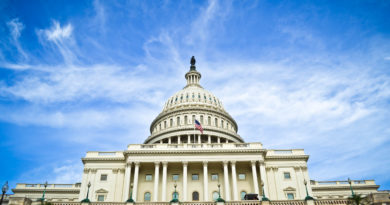Propane May Be Under-Utilized in the United States
By: Emmanuel Akinbobola and Akinbodunde Akinbobola
To secure the frontline against climate change, humanity needs to seriously confront increasing carbon emissions. The United States’ heavy reliance on fossil fuels—especially fossil fuels with high carbon emissions—challenges progress on achieving net zero carbon emissions. However, low-carbon fossil fuels like propane, specifically liquified petroleum gas (LP-gas) propane, could be better utilized. Propane/LP-gas, a by-product of natural gas and crude oil processing, is relatively clean-burning, domestic, and a readily available energy source. While many Americans may be used to encountering propane just while grilling outdoors, propane/LP-gas as an alternative energy is already used by farms, school bus fleets, other alternative fuel vehicles, and hospitals. Further replacing conventional fuels with propane/LP-Gas could significantly reduce carbon emissions.
The U.S. government is reportedly looking for technologies that will make U.S. energy supply more affordable, reliable, and efficient. This has created a pathway for the market capture of alternative energy like propane/LP-gas, particularly in the transportation and the agricultural sectors.
Alternative fuel vehicles have been called “disruptive technologies” because of how quickly the automobile industries are adapting to clean energy policies and consumer demand. According to the U.S. Energy Information Administration, more than 430,000 vehicles in the United States ran on alternative fuel as of 2016—about 100,000 vehicles more than five years earlier. In 2016, about 12 percent of the total alternative-fueled vehicle inventory was fueled by propane/LP-gas. As the deployment of these vehicles expands, there is an increasing need for infrastructure such as propane/LP-gas storage tanks and propane/LP-gas dispensers to support these vehicles.
Alternative fuel vehicles running on propane/LP-gas include those used by the public. The federal program for propane school buses was funded in part by the American Recovery and Reinvestment Act of 2009 and designed to address the shortage of propane/LP-gas powered school buses among alternative fuel buses. The Propane Education and Research Council (PERC) reported that as of early November 2017, there were 13,232 propane/LP-gas school buses on U.S. roads. Before the program, fewer than 30 percent of U.S. schools had school bus fleets run on propane. The program also has an educational component to it, with signs placed inside the propane/LP-gas buses to inform students about the benefits of alternative fuel.
These federal efforts contributed to the national success that improved propane/LP-gas school bus applications as well as the development of Combined Heat and Power (CHP) systems using propane-LP-gas. Properly designed CHP systems can provide power, hot water, and space heating and cooling more reliably, more efficiently, and at lower costs than traditional systems. In addition, CHP systems can allow buildings to operate independently of the electrical grid during periods of electric power blackouts.
Because of this, hospitals make ideal hosts for CHP systems. Hospitals operate 24/7, and have significant needs for electric power, heating, and cooling. As one of the most energy-intensive businesses in the commercial sector, hospitals consume more than twice the energy per square foot than average commercial buildings. Consistent demand for high quality, and highly reliable power make hospitals ideal for CHP. Hospitals and medical campuses that have installed CHP systems enjoy reduced operating costs and higher reliability of continued service during both instantaneous and lengthy electricity outages.
Finally, propane/LP-gas is already used by American farmers. According to PERC, 830,000 farms in the United States use propane/LP-gas, and with good reason. American farmers are confronted with stringent emissions standards for equipment such as irrigation engines. Hence why they rely on propane/LP-gas. It beats electric, diesel, and natural gas on emissions, and it works just as well watering almond trees as it does corn, carrots, and other crops. In addition, propane/LP-gas does all these economically, with lower maintenance requirements too.
In the quest for net zero carbon emissions amid heavy dependency on fossil fuel, environmentalists aim to eliminate or reduce the use of fossil fuels. As a by-product of fossil fuel, Propane/LP-gas is included in this criticism. However, once operations such as hospitals, large-scale construction, and heavy machinery are considered, it may not be economically feasible to completely eliminate carbon emissions—hence the need for options such as propane. Better utilization of propane/LP-gas, a low-carbon energy source, has the potential to help meet a net zero carbon emission standard.
Photo of propane-powered school buses in Portland, Maine by BMRR
 Emmanuel Akinbobola has studied and worked in the private, public, and IGO sectors. He is a policy enthusiast and policy developer at heart, specializing in the public-private partnership approach. Emmanuel is pursuing his master’s in public administration at Columbia University, where he has harnessed diverse experiences designing research projects and utilizing applied policy. Emmanuel continues to focus on complex local-to-global organizations addressing sustainable development growth, corporate governance, and management.
Emmanuel Akinbobola has studied and worked in the private, public, and IGO sectors. He is a policy enthusiast and policy developer at heart, specializing in the public-private partnership approach. Emmanuel is pursuing his master’s in public administration at Columbia University, where he has harnessed diverse experiences designing research projects and utilizing applied policy. Emmanuel continues to focus on complex local-to-global organizations addressing sustainable development growth, corporate governance, and management.
 Akinbodunde Akinbobola is a certified Project Management professional. He is also a licensed professional engineer in the province of British Columbia and the state of California. Akin has a master’s degree in mechanical engineering with a specialization in thermal and fluids systems from California State University-Fullerton. He is a sustainable energy enthusiast and a long-time advocate of clean fuel/alternative fuel technology. Akin enjoys volunteering and partnering with organizations that are passionate about saving the environment.
Akinbodunde Akinbobola is a certified Project Management professional. He is also a licensed professional engineer in the province of British Columbia and the state of California. Akin has a master’s degree in mechanical engineering with a specialization in thermal and fluids systems from California State University-Fullerton. He is a sustainable energy enthusiast and a long-time advocate of clean fuel/alternative fuel technology. Akin enjoys volunteering and partnering with organizations that are passionate about saving the environment.






